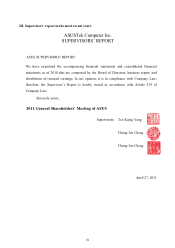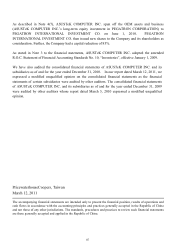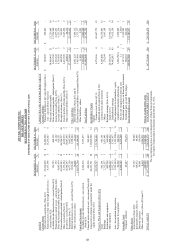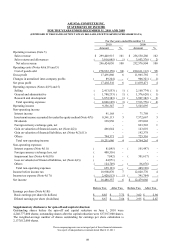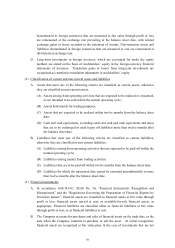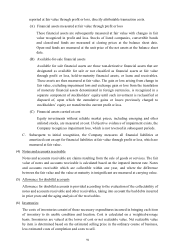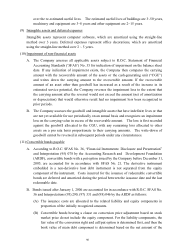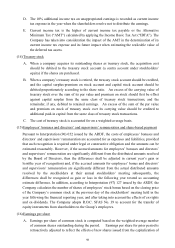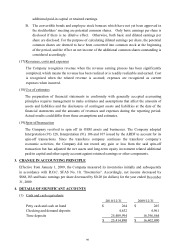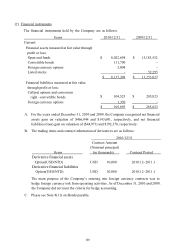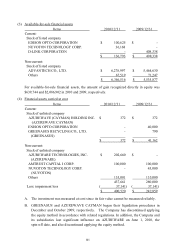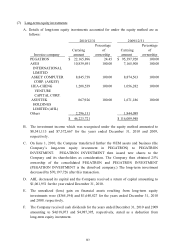Asus 2010 Annual Report Download - page 98
Download and view the complete annual report
Please find page 98 of the 2010 Asus annual report below. You can navigate through the pages in the report by either clicking on the pages listed below, or by using the keyword search tool below to find specific information within the annual report.
94
reported at fair value through profit or loss, directly attributable transaction costs.
(A) Financial assets measured at fair value through profit or loss
These financial assets are subsequently measured at fair value with changes in fair
value recognized in profit and loss. Stocks of listed companies, convertible bonds
and closed-end funds are measured at closing prices at the balance sheet date.
Open-end funds are measured at the unit price of the net assets at the balance sheet
date.
(B) Available-for-sale financial assets
Available for sale financial assets are those non-derivative financial assets that are
designated as available for sale or not classified as financial assets at fair value
through profit or loss, held-to-maturity financial assets, or loans and receivables.
These assets are then measured at fair value. The gain or loss arising from change in
fair value, excluding impairment loss and exchange gain or loss from the translation
of monetary financial assets denominated in foreign currencies, is recognized in a
separate component of stockholders’ equity until such investment is reclassified or
disposed of, upon which the cumulative gains or losses previously charged to
stockholders’ equity are transferred to current profit or loss.
(C) Financial assets carried at cost
Equity investments without reliable market prices, including emerging and other
unlisted stocks, are measured at cost. If objective evidence of impairment exists, the
Company recognizes impairment loss, which is not reversed in subsequent periods.
C. Subsequent to initial recognition, the Company measures all financial liabilities at
amortized cost except for financial liabilities at fair value through profit or loss, which are
measured at fair value.
(4) Notes and accounts receivable
Notes and accounts receivable are claims resulting from the sale of goods or services. The fair
value of notes and accounts receivable is calculated based on the imputed interest rate. Notes
and accounts receivable which are collectible within one year, and where the difference
between the fair value and the value at maturity is insignificant are measured at carrying value.
(5) Allowance for doubtful accounts
Allowance for doubtful accounts is provided according to the evaluation of the collectability of
notes and accounts receivable and other receivables, taking into account the bad debts incurred
in prior years and the aging analysis of the receivables.
(6) Inventories
The costs of inventories consist of those necessary expenditures incurred in bringing each item
of inventory to its usable condition and location. Cost is calculated on a weighted-average
basis. Inventories are valued at the lower of cost or net realizable value. Net realizable value
by item is determined based on the estimated selling price in the ordinary course of business,
less estimated costs of completion and costs to sell.


